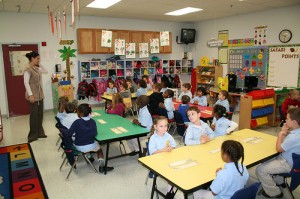 We can learn a lot from Kindergartners, I found this out a when I facilitated a fun team building game called “The Marshmallow Challenge.” (TED talk linked about this game) Teams of recent Kindergartner graduates are some of the best performers, they are only second to teams of Engineers/Architects when it comes to building the highest free-standing towers made out of 20 sticks of dry spaghetti, 1 yard of string, 1 yard of tape, and a jumbo marshmallow that must be on top. The worst performers are college business students. Why is this?
We can learn a lot from Kindergartners, I found this out a when I facilitated a fun team building game called “The Marshmallow Challenge.” (TED talk linked about this game) Teams of recent Kindergartner graduates are some of the best performers, they are only second to teams of Engineers/Architects when it comes to building the highest free-standing towers made out of 20 sticks of dry spaghetti, 1 yard of string, 1 yard of tape, and a jumbo marshmallow that must be on top. The worst performers are college business students. Why is this?
I’ll get to that after I share an Inc. article that I came across, “A Crash Course in Creativity” with a video (in the article linked) of Tina Seelig speaking at Google, Inc. about innovation and creativity. Tina is the author of “inGenius: A Crash Course in Creativity” and the Executive Director of Stanford’s Technology Ventures program. She shares a model she created “that shapes how we think about creativity and innovation as individuals, teams and organizations” from her years of research and experience working with teams and organizations. There were a lot of fascinating points in her model, here are just a few that help explain why the kindergartners perform so well in the marshmallow game.
Challenge Assumptions
Asking the right questions and re-framing are both key for creativity. Seelig suggests that one of the fun ways to re-frame is with jokes that shift perspective. She shares the example of “The Pink Panther” detective asking a person walking a dog, “Does your dog bite?” and they answer no. He bends over to pet the dog and the dog bites him. “I thought you said your dog does not bite?” The reply is, “This is not my dog.” Kindergartners Edge: They do not have all the assumptions built up that we do from years of forming our belief systems.
Culture of Experiments
Creating a culture that is willing to experiment is highly correlated with innovative individuals and teams. Rather than see failures, they see great feedback for innovating. Rapid prototyping is encouraged for gathering more data. Kindergartners Edge: They create some of the tallest and most interesting marshmallow towers by naturally using an iterative process that gives quick feedback. The college business students do the opposite, they use most of the allotted 20-minute time to plan how they will build the tower and leave only enough time to try it once (and it often falls over or is much shorter).
Habitat Designed for Creativity
Selig shows a picture of a Kindergarten classroom that is full of bright primary colors and interesting shapes and sizes and then a picture of rows of dreary school desks from a college classroom and finally the scene of ugly square cubicles. Your surroundings make a big difference in your ability to innovate. Bright primary colors, flexibility in rearranging, and building in a sense of play all increase innovation. She showed a picture of a slide that is in the middle of the offices at Pixar, Inc.
How can you learn from those Kindergartners and program your internalGPS for more innovation and thriving? I am going to start sharing more “perspective” jokes, run more experiments and put a few bright colored fun toys in my office!
photo credit via Flickr creative commons: Kindergarten classroom: mastcharter Cubicles: Michael Lokner